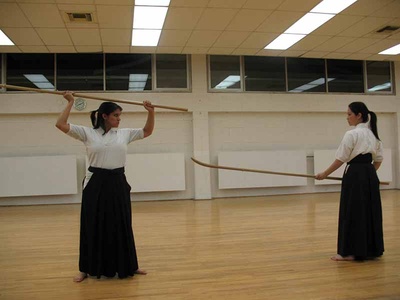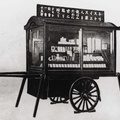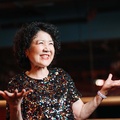When I hear the word "naginata," I imagine a scene from a period drama in which a samurai woman holds a naginata. Even for ordinary Japanese people, naginata may not be very familiar. However, I was surprised to learn that there are naginata dojos all over the United States and that people are even competing in the World Championships. I immediately went to meet Andrea Vyas, who won a silver medal in a past championship.
Silver Medal in the Women's Team World Championships
Andrea started naginata nine years ago when she chose it as part of her physical education class at a community college in the suburbs of Los Angeles. "I was interested in naginata as an unfamiliar sport that I couldn't experience in Colorado, where I was born and raised," she said. However, her life changed when she found out that the class was taught by Helen Nakano, "the leading naginata expert in America" (she was awarded the Order of the Rising Sun, Gold Rays with Rosette in spring 2009 for her contributions to popularizing naginata in America).
"Even though I knew absolutely nothing at the time, I could sense the elegance and dignity in my teacher's demonstration. I really wanted to try it myself, but watching and doing are two completely different things. Even forms that looked easy at first glance were extremely difficult to perform on my own. That lit a fire in my heart that made me want to continue."
Andrea was so moved by her enthusiasm that she asked her to join the dojo outside the campus after she had finished her course at the college.
"Every step was difficult, from raising and lowering the naginata to the next, and I became more and more drawn in. When I put on the equipment for the first time, I felt very tense. I really wanted to take part in a match, so I started to practice hard. I guess it was good that I'm not the type of person to give up easily," Andrea recalls.
Beginners in naginata start at 3rd kyu, and after 1st kyu one advances to shodan, with ranks up to 5th dan. Andrea, who has a 3rd dan, competed in the World Naginata Championships in 2007 as a member of the US national team. In the women's team division at the championships, the Japanese team won the gold medal, and the US team, in which Andrea participated as a middle player (a team is made up of three players: Senpo, Chuken, and Taisho), won the silver medal.
A dignified and sincere gaze
The first World Naginata Championship was held in 1995 and has been held every four years since then. Fifteen countries participated in the fourth tournament in which Andrea competed. Japan won the overall championship, Belgium, the host country, came in second, and the United States came in third.
"I didn't feel any pressure even when we played against Japan in the team match. It's true that before the match I was excited and thought, 'We're going to play in the final against Japan! Isn't that amazing?' but I just went into the match with a clear mind. That's why I practiced for hours every day before the World Championships."
Her dream is to set up a naginata dojo in her home. "At the moment I can teach others, but there are great teachers in Los Angeles who are several levels above me, so training the next generation is not yet a high priority. I want to further perfect myself as a seeker of naginata. For me, naginata is not just martial arts, it is training as a person."
I heard that Andrea, who is currently five months pregnant, plans to resume training immediately after giving birth in preparation for the 5th World Championships in 2011. Her dignified gaze, along with the image of her enthusiastic training, left a strong impression on me during the interview.
*This article is reprinted from US FrontLine, October 5, 2009.
© 2009 Keiko Fukuda












